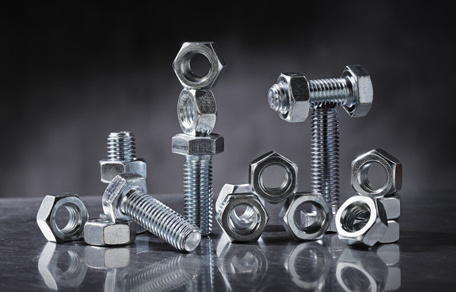News Center
18
2020
-
09
New trends in the development of auto parts industry chain
Author:
As the top of the automobile industry, the auto parts industry can also be said to be the foundation of the development of the automobile industry. In recent years, with the rapid development of the vehicle consumer market and the service and maintenance market, the auto parts industry has developed rapidly, and the development trend is good, and it is constantly transforming and upgrading to the direction of specialization.
At the same time, the globalization of the automotive industry chain has accelerated the merger and reorganization of vehicle companies, broke the original global supporting system, and promoted the merger and reorganization of component companies. At the same time, in order to adapt to the new needs of automakers in the world's auto parts industry, some new development trends have emerged:
To
1. The development and changes of the collaborative relationship between automobile and component manufacturers
Today's organizational relationship between European and American automobile and component manufacturers has been greatly improved, and the past purely competitive-based supply model has been greatly improved. The direction of improvement is Japan's subcontracting type, reducing the number of first-level component suppliers. Reduce management functions, while maintaining competitiveness, take into account cooperation. The ways of cooperation include strategic alliances between enterprises and mutual shareholding.
Japan and South Korea’s cooperation-based subcontracting model retains the characteristics of its cooperation and continues to join the competition mechanism. Even if only two manufacturers supply parts and components, they can use the “development competition” mentioned above. Maintain the effectiveness of competition.
The new network structure formed by the mutual supply of various parts and components production systems is conducive to improving the degree of competition. The organizational relationship between the entire retailer is becoming more and more cooperative and competitive, improving organizational efficiency, giving play to the respective advantages of vehicle and component manufacturers, and improving the overall competitiveness of the entire supply chain.
To
2. Global development
The global development trend of the automotive supply chain is obvious to all. Due to the globalization of the consumer market, OEMs are bound to use different means such as sole proprietorship and joint ventures to enter various consumer hotspots around the world, and this global distribution of OEMs will cause component manufacturers to follow, this globalization trend The following challenges are presented to component manufacturers:
The global demand trend of the supporting market and the aftermarket requires component manufacturers to meet global delivery capabilities. In order to achieve timely delivery, more consideration needs to be given to various delivery issues, and even the global supply of raw materials.
In order to ensure 100% DIFOT, and based on certain tax issues, component manufacturers may adopt a strategy of following the global distribution of automakers. However, the conflict between this decentralized organizational model and the original centralized management, and how to reduce operating costs while improving the balance of organizational efficiency pose challenges to the shared service capabilities of enterprises.
To
3. The development of technology and the upgrading of high-end manufacturing of parts and components
With the improvement of new energy requirements for vehicle safety, comfort, and environmental protection, the manufacturing technology of auto parts has also produced some new changes, including:
Product environmental protection, strengthen the research on "green cars", actively apply new energy, and promote the requirements of energy saving and emission reduction. In Germany's 2020 high-tech strategy setting, one of the future projects is: Germany will have one million electric vehicles in 2020.
Electronic and intelligent products have become a major trend in the development of the automotive industry. How to improve the safety and comfort of automotive use through electronic technology has also become a hot spot in the entire industry. The global automotive electronics industry will maintain an average growth of 8.5% by 2020 Intensity.
Networking of information exchange: With the maturity of 4G/LTE and cloud technologies, the information exchange parts in automotive electronic products are becoming more and more networked. Parts and components are modularized and generalized to cope with the platform strategy of automakers. Product lightweight: The lightweight of future cars is actually the lightweight of parts. The large number of applications of aluminum castings, aluminum-magnesium alloy parts, and automotive plastic parts will be a trend. Development of digitalization and globalization: simulation technology, three-dimensional digitalization, etc. Digital technology is changing the design and development methods of the automotive industry. In order to meet the needs of accelerating product development cycle and apportioning development costs, technology development has carried out extensive integrated cooperation on a global scale.
To
4. Closer and almost synchronized whole zero enterprise business collaboration
In order to meet the diversified needs of customers, automakers are paying more and more attention to the ability of mass customization, and mass customization requires supporting parts and accessories to support modularization. The emergence of modularity further promotes close cooperation between vehicle manufacturers and module suppliers in development, manufacturing and service. At the same time, in order to quickly respond to market demand, the efficiency of the entire supply chain needs to be improved. The changing needs of various downstream markets are transmitted to upstream component suppliers, requiring these large-scale and capable component suppliers to have all-round functions such as modular design, development, manufacturing and service.
1. Use collaborative design software to support simultaneous design and development
2. Use traditional EDI technology to exchange demand and supply between OEMs and Tier 1 suppliers
3. Use ASN and barcode technology to improve logistics coordination management capabilities
4. Use extended Kanban or JIT/S technologies to improve collaborative on-demand production
The application of the above-mentioned total information technology is faster than the development in the past few decades and strengthens the cooperation between the integrated enterprises more closely.
To
5. Extension of Lean Thinking
The pressure of cost is the eternal driving force for continuous improvement of enterprises.
On the basis that the cost of raw materials is within a reasonable range and there is little room for reduction, various advanced management and manufacturing ideas have been developed to further improve the efficiency of enterprise operation and reduce operating costs.
World-class manufacturing will promote:
1. Extend lean thinking from within the enterprise to the external supply chain
2. Focus on customer needs, product quality and reliability
3. And the development of a strong, agile and flexible workforce
4. Reduce waste of business operations and processes
5. Attach importance to communication and collaboration with customers and suppliers
Intelligent manufacturing: Increasingly personalized demand is the original driving force for single-piece production. In order to satisfy the needs of individual customers, but at the same time make the production of one-off products profitable, enterprises must conduct intelligent manufacturing. The industrial internet of things (industrial internet of things), cyberphysical system (Cyberphysical system, CPS), industry 4.0 (Industry 4.0), and other thought methods and application practice will become the hottest topics in the next 10 years.
Big data: Big data is undoubtedly a big topic, and the practice of this big topic will implement differentiation in various industries. How the auto parts industry uses big data and provides big data will generate value along with the rise of intelligent manufacturing.
The previous page
The previous page





 Jaccicalu@dzbzj.com
Jaccicalu@dzbzj.com
 86-519-88700661
86-519-88700661
 Feedback
Feedback
